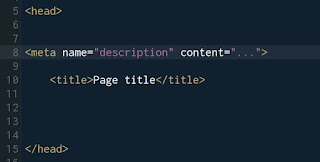NINE SECRET HTML HEAD TAGS
HEAD TAGS
ln web development, the term "head tags" refers to the HTML elements that are placed within the <head> section of an HTML document. The <head> section is typically located between the opening <html> tag and the opening <body> tag.
Here are some commonly used head tags:
1.<title>: Specifies the title of the webpage, which is displayed in the browser's title bar or tab.
2.<meta name="viewport" content="width=device-width, initial-scale=1.0">: Sets the viewport properties for responsive web design, ensuring proper scaling and layout on different devices.
3.<meta charset="utf-8">: Declares the character encoding for the webpage. It ensures that the browser interprets the text correctly.
4.<meta name="description" content="...">: Provides a brief description of the webpage's content. It is often used by search engines when displaying search results.
5.<meta name="keywords" content="...">: Specifies a list of keywords or phrases related to the webpage's content. It used to be an important factor for search engine optimization (SEO), but its significance has diminished over time.
6.<link rel="stylesheet" href="styles.css">: References an external CSS (Cascading Style Sheets) file to style the webpage.
7.<script src="script.js"></script>: References an external JavaScript file to add interactivity or functionality to the webpage.
8.<base href="https://www.example.com/">: Sets the base URL for all relative URLs within the webpage. It helps resolve relative paths for linked resources.
9.<meta http-equiv="refresh" content="5; url=https://www.example.com/">: Redirects the webpage to a different URL after a specified time interval (here, 5 seconds).
These are just a few examples of head tags. The <head> section allows you to include various other tags and elements for specifying character encoding, linking to stylesheets and scripts, providing metadata, and more.











.jpeg)
Comments
Post a Comment